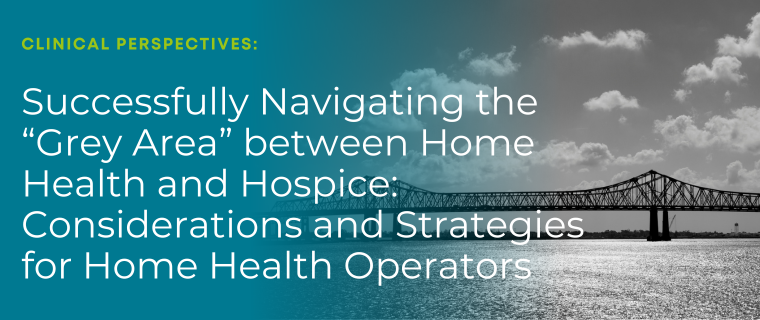In A Nutshell: Home Health Value Based Purchasing Final Rule
If you’re in home health, you’re probably well aware that in early November, CMSreleased the final rule for Home Health Value Based Purchasing (HHVBP). But, you probably haven’t had time to read the ruling yet. It’s a prettyhefty document. Here’s aCliffsNote version.
 We previously wrote aHome Health Value Based Purchasing blog postto help outline the important messages from the proposal. We thought we’d help you out with an update on the final.
We previously wrote aHome Health Value Based Purchasing blog postto help outline the important messages from the proposal. We thought we’d help you out with an update on the final.
The proposal has passed into a final rule with only minimal changes. Thechanges to noteare the payment adjustment range (was at 5% to 8%, now is 3% to 8%) and 5 measures (4 process and 1 new) have been dropped from the Total Performance Score calculations. To understand some of thedetails of final rule, keep reading.
As a reminder, The HHVBP program requires home health agencies to compete for payment adjustments to current reimbursements based on quality performance. The program will eventually affect all Medicare patients at all Medicare-certified home health agencies. The goal is to increase quality care through payment incentives.
CMS estimates that implementing the Home Health Value Based Purchasing program will save the economy$380 millionbyreducingunnecessary hospitalizations and skilled nursing facility usage.
Who would initially participate?
Nine states have been randomly selected to pilot the program in 2016. The same nine states in the proposal are included the final ruling. See them pictured below.

How much of a payment adjustment are we talking about?
The agencies in the selected states will be looking at incentives and penalties that would start at 3 percent and increase to 8 percent over the five year period. If an agency is expecting $20 million in revenue, a 5 percent penalty would cost an agency $1 million. This is achangefrom the proposal. Previously, the proposal indicated that a payment adjustment would be a 5 percent to 8 percent gradient over the same time frame.

Participants will be measured against themselves (baseline year is 2015) and their peers (volume by state) for five years, starting January 1, 2016. Payment adjustments will be applied two years later from their performance year. The schedule is also subjected to possible changes after 2019. Agencies will have a calculated Total Performance Score that determines their payment adjustment.
How is a home health agency’s Total Performance Score calculated?
Here is where it gets hairy. Agencies’ scores are calculated through a formula that takes achievement and improvement points into consideration against baselines and benchmarks. In essence, your total performance score is calculated from quality measures that are primarily determined by your outcome and process measures. The outcomes and process measures make up 90% of an agency’s Total Performance Score. The other 10% is calculated from three added measures that are collected through a CMS reporting portal.
The final outcome measures, process measures and additional new measures are outlined below. There were no changes to the Outcome Measures.
The updates to the Process Measures and New Measures are below, including the measures that have been dropped.
What exactly does this mean for patients?
To help explain how each patient individually impacts an agency’s total performance score through outcome measures, we’ve included our patient examples again. Keep in mind, all outcome measures measure improvement.
 Janey’s HHA stay started with her being chairfast, unable to ambulate and unable to wheel herself. It ended with her being discharged from the agency and now she’s able to wheel herself. Jane also didn’t go to the ER or Hospital and also achieved positive results with the two utilization outcomes. Janey’s stay is ideal for an agency because she achieved positive outcomes.
Janey’s HHA stay started with her being chairfast, unable to ambulate and unable to wheel herself. It ended with her being discharged from the agency and now she’s able to wheel herself. Jane also didn’t go to the ER or Hospital and also achieved positive results with the two utilization outcomes. Janey’s stay is ideal for an agency because she achieved positive outcomes.
Eric’s HHA stay started with him being bedfast and in a non- responsive state. It ended with Eric being chairfast. But because Eric was non-responsive at the Start of Care he is excluded from the measure. Eric’s stay doesn’t impact an agency’s total performance score unless he readmits to the hospital or skilled nursing facility.
responsive state. It ended with Eric being chairfast. But because Eric was non-responsive at the Start of Care he is excluded from the measure. Eric’s stay doesn’t impact an agency’s total performance score unless he readmits to the hospital or skilled nursing facility.
 Sam resumed his HHA stay after a short hospital visit. Sam was discharged by the agency and his ability to bathe only showed stabilization, meaning it didn’t get worse but it also didn’t improve. Thus, Sam didn’t achieve the improvement in bathing outcome. This actually hurt the agency’s total performance score in a small way.
Sam resumed his HHA stay after a short hospital visit. Sam was discharged by the agency and his ability to bathe only showed stabilization, meaning it didn’t get worse but it also didn’t improve. Thus, Sam didn’t achieve the improvement in bathing outcome. This actually hurt the agency’s total performance score in a small way.
Miller started her HHA stay with her not being able to bathe independently, but she transferred to a hospital before she was discharged from the agency. So, Miller is not applicable for showing improvement in bathing because the episode ended with a Transfer to an Inpatient Facility. However, the agency received two negative marks because Miller went to the ER and also had an acute care stay. This hurt the agency because she visited the acute setting. The agency will have a second chance to show improvement with Miller when she resumes care.
independently, but she transferred to a hospital before she was discharged from the agency. So, Miller is not applicable for showing improvement in bathing because the episode ended with a Transfer to an Inpatient Facility. However, the agency received two negative marks because Miller went to the ER and also had an acute care stay. This hurt the agency because she visited the acute setting. The agency will have a second chance to show improvement with Miller when she resumes care.
What’s next?
This final ruling confirms what you probably already guessed. Even if your agency isn’t in one of the nine selected states, all of us in home health should expect and prepare for alterations to payment structures. In a value-based payment world, care providers must understand and manage patient risk better than ever before. Analytics can help with that as it adds an additional layer of insight to a caregiver’s decisions. Schedule a demo to learn how we can help your agency better assess for and manage risk.
Related Blogs

HHVBP: A Winning Strategy for Home Health Providers
The start of 2025 has ushered in a wave of new realities for Home Health...

Pulse Referrals & Admissions: Real-world AI impact in a sea of hype
Throughout the tech space, including home health, much has been said rec...

Successfully Navigating the “Grey Area” between Home Health and Hospice: Considerations and Strategies for Home Health Operators
Amanda Fabozzi, PT, DPT Whether a patient should be served by hom...


